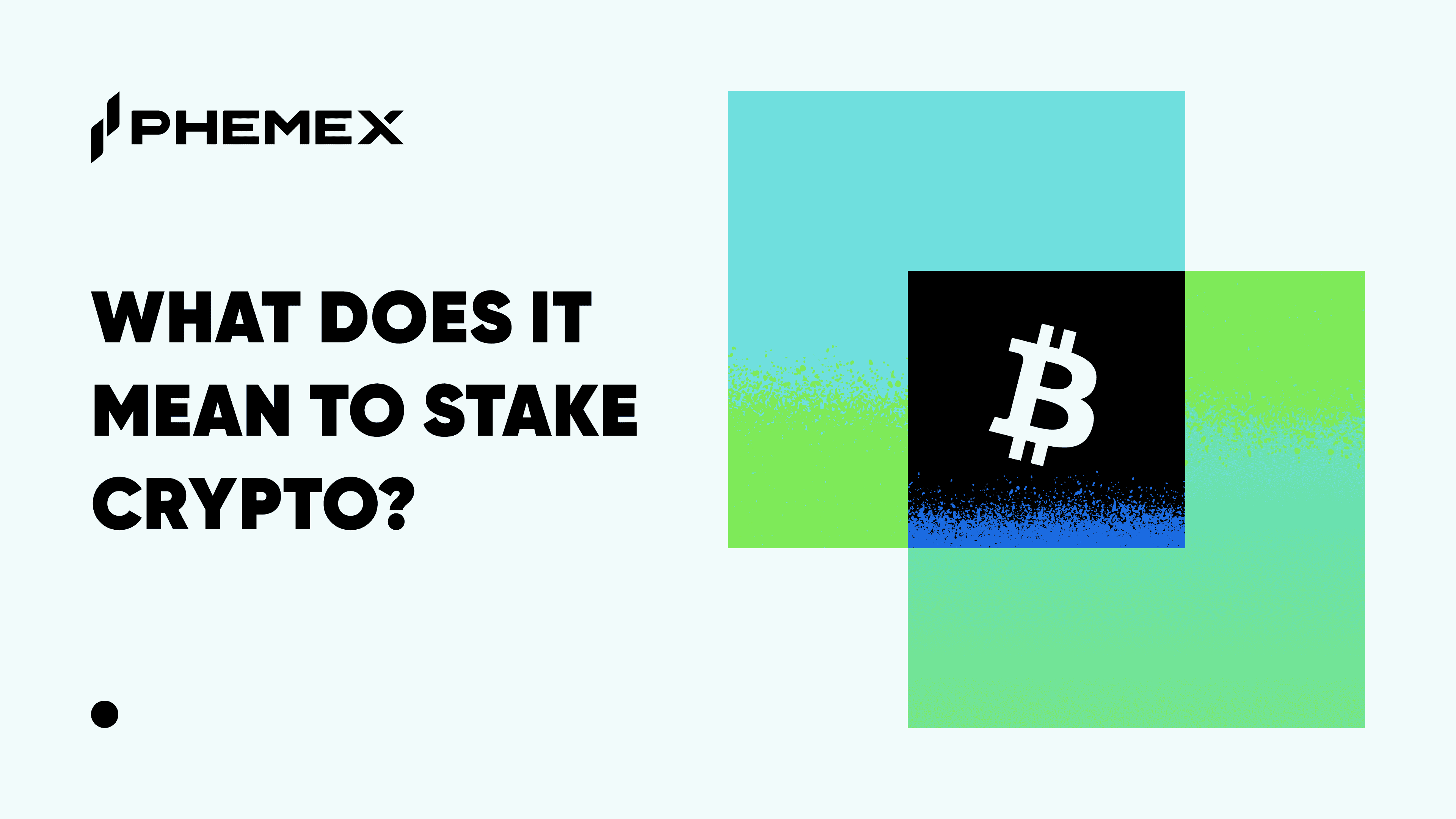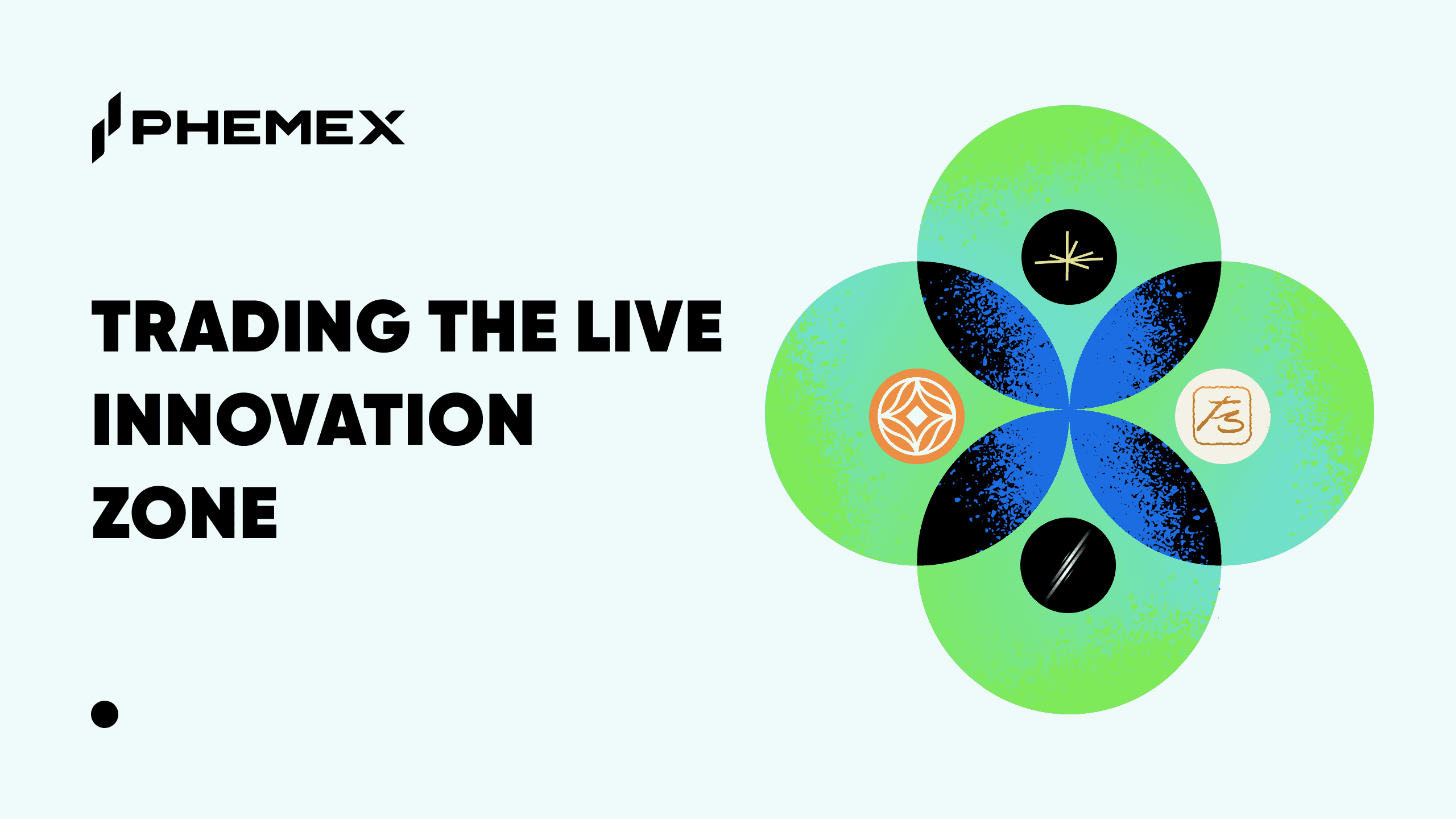For many investors, a crypto exchange is the only way to get involved in the crypto world. Given the vital role exchanges play in the crypto ecosystem, it’s important to understand them and the different forms they come in. As the most popular type of crypto exchange, centralized exchanges are a good place to start.

What Is an Exchange?
An exchange is a marketplace where financial instruments, commodities, currency, crypto, or stocks can be traded, bought, and sold. Exchanges seek to create fairness within the market through strict regulations, equal access, and the open communication of information and prices.
Although most exchanges share similar basic features and principles, exchanges frequently differ from each other in terms of products and operations. For example, a crypto exchange like Phemex differs extensively from a stock exchange like the New York Stock Exchange (NYSE) in terms of the products, rules, and features offered.
What Is a Crypto Exchange?
A crypto exchange is a marketplace where cryptocurrencies can be bought, sold, or traded. Most of the largest crypto exchanges in the USA will allow you to buy crypto with fiat currency such as USD, trade one cryptocurrency for another (such as Bitcoin for Ethereum), and sometimes engage in futures trading.
A crypto exchange can be centralized, decentralized, or a hybrid of the two (combining both centralized and decentralized concepts into one). Centralized exchanges are currently used by the vast majority of crypto users. Decentralized and hybrid exchanges are slowly gaining in prominence, but are still much less popular.

What Is a Centralized Exchange?
A centralized exchange is an exchange that uses a third party to facilitate the transactions between the sellers and buyers. Just as a traditional bank serves as a third-party intermediary connecting the buyer and seller in financial transactions, a centralized crypto exchange connects the buyers and sellers in crypto transactions. This centralization often leads to a more reliable, secure, and user-friendly experience.
Centralized exchanges draw upon concepts from centralized finance (CeFi) that have been utilized in traditional finance (TradFi) and stock exchanges for decades. This integration of concepts results in an exchange that offers the best of both worlds — a basis in tested and reliable traditional CeFi plus access to various new-age cryptocurrencies.

Visualization of a centralized vs. decentralized exchange (Source: Ace Info)
Isn’t Crypto Decentralized?
Although an exchange may be centralized, the cryptocurrency that investors buy on the exchange is often still decentralized. Ethereum (ETH) for example, is available to be purchased on most centralized exchanges; however, Ethereum itself is still a decentralized cryptocurrency. In other words, Ethereum does not have any centralized body controlling its network and operations, and is instead managed by a network of individual users and computers.
Why Did Centralized Crypto Exchanges Come About?
Centralized crypto exchanges create a safer, easier, and more comfortable experience for individuals looking to get involved with crypto. These benefits of centralization are what first motivated many individuals to open centralized crypto exchanges rather than decentralized ones.
The proliferation of centralized exchanges was also driven by a desire to improve institutional trust in crypto and increase adoption among retail investors. Creating exchanges based on long-established CeFi concepts undoubtedly helped achieve that goal and led to greater trust in crypto.
What Are The Features of Centralized Exchanges?
So what exactly are the benefits of centralized exchanges, and why are so many investors choosing them? The main benefits are as follows:
- Security and reliability: Exchanges must follow the financial and legal regulations of the regions where they operate. These regulations create a safer experience for investors that many decentralized exchanges cannot rival. However, it’s important to note that each exchange may have a different level of security depending on its location and local regulations.
- High liquidity, trading volume, and speed: Centralized exchanges typically have multiple liquidity providers and higher volume, and can fill and close an open order almost instantaneously. These features prevent liquidity issues, slippage fees, slow times-to-fill, and high spreads, all of which are common with decentralized exchanges. Furthermore, this high liquidity and volume also leads to lower volatility and less opportunity for manipulation.
- Great customer experience: Centralized exchanges are designed with user experience in mind and are typically easy to use with a clean user interface. Furthermore, centralized exchanges often have a well-developed and attentive customer support team. These features are especially helpful for newer investors who may need more guidance and troubleshooting support. In contrast, decentralized exchanges typically cater to more experienced investors.
- Custodial wallets: Many centralized exchanges have custodial wallets that securely hold the cryptocurrency for their investors. Investors can instead withdraw the crypto into their own wallets; however, for someone who is not yet ready to own and operate their own wallet, a centralized exchange is a good choice, as it can hold the cryptocurrency safely and reliably for you, just like a bank.
What Are the Products of Centralized Exchanges?
Most centralized exchanges offer the same basic products, such as:
- Purchasing crypto: Buying cryptocurrency with fiat currency, such as USD
- Spot trading: Trading one cryptocurrency for another
- Contract trading (futures): Trading crypto derivatives with varying degrees of leverage
- Market & limit orders: Buying or selling cryptocurrency at the market price versus buying or selling cryptocurrency at a set price you specify
Introduction to Phemex’s Centralized Exchange
One established centralized exchange is Phemex. The Phemex exchange is a full-service marketplace that provides all the advantages of a centralized exchange while offering a wide range of crypto products and features. Phemex was created by former Morgan Stanley bankers with the goal of creating a trustworthy and user-oriented crypto experience. Phemex is perfect for both new and advanced investors alike and has a wealth of helpful features and in-demand products.

Phemex’s trading interface
What Crypto Investment Products Does Phemex’s Centralized Exchange Feature?
Phemex offers not only the basic products that a typical centralized exchange offers, but also some additional special perks:
- Purchasing crypto: Phemex makes it easy for investors to buy cryptocurrency with fiat currency, such as USD. Phemex allows investors to instantly buy BTC, ETH, and other major cryptocurrencies with a credit or debit card.
- Spot trading: Phemex users can trade BTC, ETH, and 53+ crypto pairs on a lightning-fast trading engine.
- Contract trading (futures): Phemex offers advanced products for more experienced traders, such as contract trading, which allows investors to trade crypto derivatives with up to 100x leverage. With Phemex, investors can access BTC/USD, ETH/USD and over 39+ contract pairs using conditional order, take profit, stop loss, and more.
- Market & limit orders: Phemex users can buy and sell cryptocurrency at the market price, or with limit orders that allow users to buy and sell their cryptocurrency at a specified price.
- Interest-earning accounts: Phemex’s interest-earning accounts allow investors to earn Bitcoin and other cryptos with up to 10% APY interest and crypto income being paid out daily or weekly.
- A testnet: Phemex has a practice trading site that allows investors to gain familiarity with Phemex’s trading interface and learn about crypto trading in a practice environment without real money.
- Premium membership: Phemex offers users a monthly premium membership that provides investors many benefits, including the ability to trade with zero transaction fees on spot purchases. The subscription costs $9.99 for 30 days, $19.99 for three months, and $69.99 for a year.
- Competition Mode: Competition mode gamifies investing and allows users to create teams and compete with other Phemex investors for a specified prize pool.

What are Phemex’s Features?
In addition to the aforementioned products, Phemex offers the following features:
- 30+ liquidity providers
- 300 thousand orders executed per second
- 24/7 multilingual support
- A safe and easy-to-use mobile app
How to Invest in Crypto on Phemex?
Learning how to invest in crypto on Phemex is incredibly simple. The Phemex website offers a variety of resources that help investors learn more about crypto and the process of buying and selling it. The easiest way to buy crypto on Phemex is by credit card, which takes only five steps from start to finish.
- Create an account.

- Select “Buy Crypto with Credit Card” under the “Buy Crypto” tab.

- Insert how much money you want to spend and your currency type.

- Select the channel you want to use and click the “Buy” button.

- Enter your card details.

Any crypto you purchase is automatically stored in your secure Phemex crypto wallet, from where it can be freely transferred, traded, converted back to fiat, or used to generate returns through Phemex’s financial services.
Conclusion
Crypto exchanges are a crucial part of the current crypto ecosystem. Centralized crypto exchanges are one of the best ways to get involved in crypto, and are the most popular form of crypto exchanges in the world.
Centralized crypto exchanges use a third-party intermediary to connect buyers and sellers. They draw upon concepts of CeFi and TradFi, and operate in a similar manner to traditional financial institutions like stock exchanges. They offer a reliable and user-friendly experience that allows people to seamlessly buy, sell, and trade crypto. Furthermore, centralized exchanges provide a wealth of beneficial and unique features that make them perfect for new and advanced traders alike. Phemex is one example of a centralized exchange, and is a great choice for those looking to get involved in the crypto world.
Read More
- What Is A Decentralized Exchange (DEX) in Crypto?
- Crypto Exchange Security in 2024
- What is Cryptocurrency & How It Differs From Digital Cash
- DeFi vs. CeFi: Understand The Differences
- What Are Decentralized Applications (dapps)?
- How To Trade Crypto: The Ultimate Investing Guide
- What Is DeFi: How To Be Your Own Bank With $100
- TradingView: What Is It and How to Use It to Trade with Phemex









